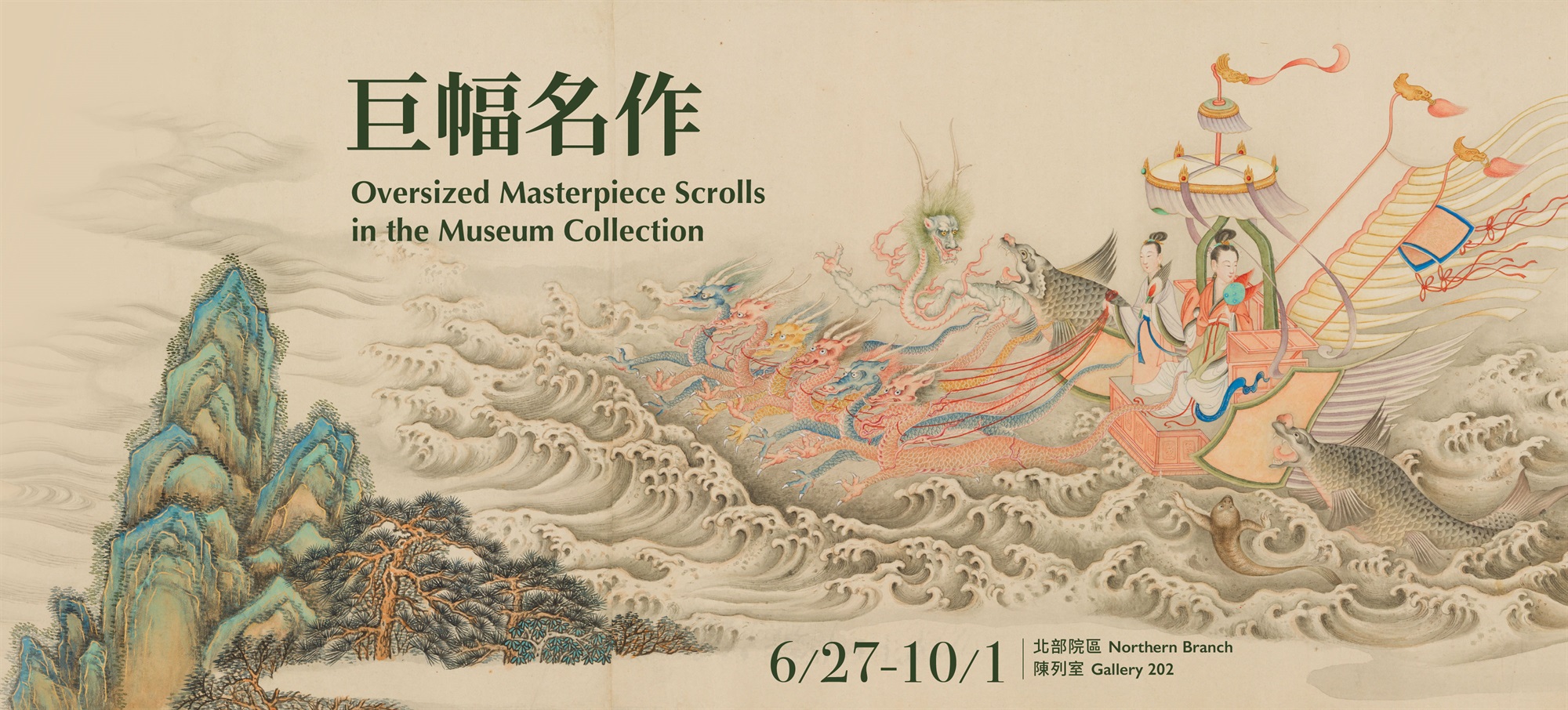Selections
-
Rubbing of Stone Carved Portrait of the Wu Family Shrine
Han Dynasty
Paper
The rubbing was from the lower west wall on the lef t side of the Wu Family Shrine in Shandong Province, portraying the story of seven daughters taking vengeance for their father. The Wu Family Shrine is located in Jiaxiang County, Jining City, Shangdong Province. The entire site includes the three stone halls above ground and two gate towers of the Wu Family Tomb from the late Eastern Han dynasty. The Wu Family Shrine was built in the first year of the Jianhe reign of Emperor Huan (147).
The picture tells the story that the county magistrate killed the father of seven daughters unjustly. Therefore, the seven women used the opportunity of the magistrate’s carriage to cross the Weishui bridge; five of them stopped the carriage and forced it to fall into the river, and the other two women on a boat ambushed under the bridge, launching an at tack on the magistrate in the water to avenge the death of their father.
-
Rubbing of Taishi Gate Tower with Inscription at Songshan
Han Dynasty
Paper
The Taishi Gate Tower was built in the 5th year of Yuanchu reign of Emperor An (118) in the Eastern Han dynasty, located in the Zhongyue Temple in front of the Taishi Mountain in Songshan, Henan Province. It originally served as the ceremonial gate tower of Taishi Mountain Temple in the Han dynasty, divided into two parts on the east and west; the gate towers used stones in rectangular and cube shapes to complete the construction. The gate tower has the title in seal script carved in relief and inscriptions in clerical script, with vertical divisions separating each line.
Pat terns of vivid f igures in various poses, carriages, animals and plants fully decorate the remaining stone surface, which provide valuable physical materials for researching paintings and social customs in the Han dynasty. The calligraphy in clerical script demonstrates a balanced structure in an unpolished manner, carrying the spirit of the seal script; it is considered an outstanding artwork of the extant carved inscriptions from the Han dynasty.
-
Rubbing of Shaoshi Gate Tower with Inscription at Songshan
Han Dynasty
Paper
The ‘Three Gate Towers of Songshan’ is the collective name of the Taishi, Shaoshi and Kaimu temple gate towers, located in the Songshan area in Henan Province. They are the most ancient temple gate towers existing in China. The Shaoshi Gate Tower sits under the Shaoshi Mountain on the west of Dengfeng County, Henan Province. It was the ceremonial gate tower of Shaoshi Lady Temple built by Yingchuan Prefect Zhu Chong in the 2nd year of Yanguang reign of Emperor An (123) in the Eastern Han dynasty. The style is similar to the Taishi Gate Tower. The calligraphy of ‘Inscription of Shaoshi Gate Tower’ is in seal script, presenting a genuine style embedded with the grandness of expertise. The title is writ ten in clerical script. The pictorial decorations fully cover the rest of the surface, as seen on the Taishi Gate Tower. The calligrapher Wang Shu from the Qing dynasty commented that ‘Although the carving is not skilful enough, the unique calligraphy shows a honest quality’.
-
Rubbing of Stone Carved Portrait at Xiaotang Mountain Stone Hall
Han Dynasty
Paper
The stone hall of the Guo Family Tomb sits on the Xiaotang Mountain in Jinan, Shandong Province. The inside of the stone hall has numerous craved portraits, including themes commonly seen in the tombs of aristocrats in the Han dynasty, activities such as court meeting, formal visiting, outing, hunting, and acrobatics entertaining. The hall's exterior wall has countless inscriptions by travellers; the earliest one was writ ten in the mid-Eastern Han dynasty. Additionally, the painting style shows similarity to the stone carving from the Yongping reign of the Eastern Han dynasty, which was excavated from the nearby area of Feicheng; thus, it suggested that the construction period of the Xiaotang Mountain Stone Hall should be around the time of Emperor Ming, Han dynasty. The rubbing of the portrait in light-carved lines originated from the Xiaotang Mountain Stone Hall, using the technique of single-line engraving. The image sits on the same level as the stone surface, which gives an ef fect similar to the line-drawing paintings.


